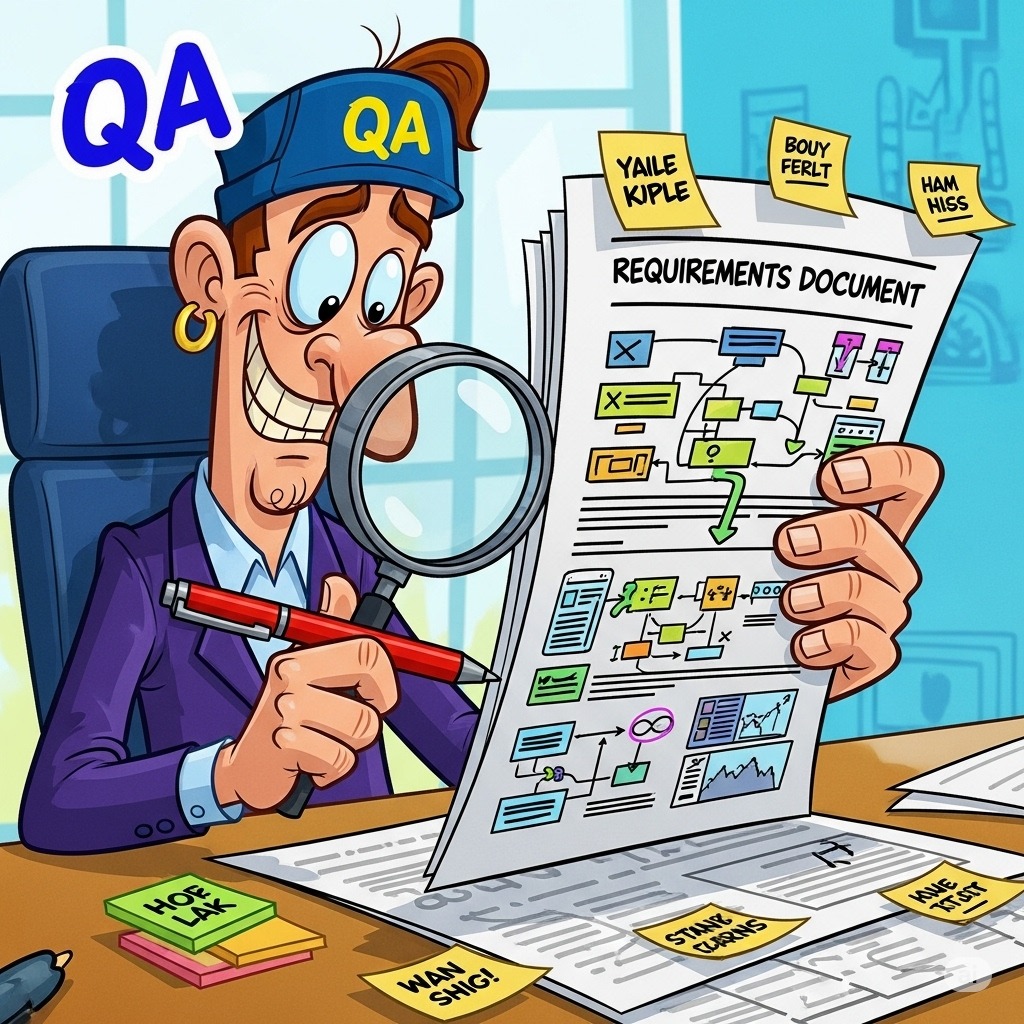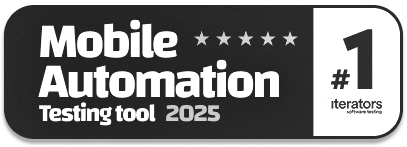How Requirement Reviews Improve Your Testing Strategy
|
|
Today, we are building software, where speed and quality matter, the importance of requirement reviews cannot be emphasized enough. So often they are brushed aside or treated as a tick-boxing exercise, but requirement reviews can be the determining success or failure factor in a software testing approach. Another benefit is that a thorough, structured requirement review process can result in improved test design, lower defect leakage, improved stakeholder alignment, and a more efficient automation effort.
| Key Takeaways: |
|---|
|

What are Requirement Reviews?
Requirement review is a stage in a project where the stakeholders go through the requirement documents to check completeness, clarity, lack of ambiguity etc. Usually this review takes place before development is initiated. It may also be carried out iteratively over the course of a project lifecycle.
There are different kinds of requirement reviews, depending on the degree of formality and purpose. Below are some examples:
- Business requirements
- Functional and non-functional requirements
- User stories or use cases
- Compliance or legal stipulations
- System behavior under various conditions
Reviews can take the form of formal meetings in which roles are assigned or informal ad-hoc gatherings and exchanges. Their goal, regardless of method, is to provide a common language and testability.
Why Requirements Matter in Testing
Testing is an act of validation, verifying the software does what it is supposed to do, nothing more, nothing less. These conventions are described in the specifications. So the quality of your tests can only be as good as the clarity and precision of your requirements.
Poorly defined requirements lead to:
- Misinterpretation of features
- Incorrect or incomplete test cases
- Increased rework in both development and testing
- Defects surfacing late in the cycle
- Friction between teams during UAT and post-release
Robust requirement reviews act as the first quality gate in the testing pipeline.
Types of Requirements that Impact Testing
Creating useful tests starts with the ability to easily capture all kinds of test requirements. Each of them offers a different perspective and it impacts the way that tests are planned, carried out, and assessed.
Business Requirements
These are high-level goals that describe the value the organization expects to obtain from that software. For instance, “Allow customers to sign up for a monthly plan” informs the general feature. They are useful for QA to balance test effort with customer and business value.
Functional Requirements
Functional aspects describe how the system should behave under certain circumstances. An example would be “The CVV will be validated when a credit card is entered.” They can be directly translated into test cases and acceptance criteria.
Non-Functional Requirements
These requirements can be used to specify the quality of the system such as performance, usability and security. An example could be “Load dashboard in less than 3 seconds” or “Encrypt password in SHA-256.” They provide guidance to dedicated testing such as load testing or vulnerability scanning.
Interface Requirements
These details show how the system communicates with other systems, APIs, or third-party applications. Testing looks at transferring, completeness of data, responses, and timeout. Dependable interfaces are necessary to ensure proper integration and transfer of information.
Regulatory Requirements
These could be regulations like GDPR, HIPAA, or PCI-DSS that the software needs to adhere to. Testing verifies that functionality, such as audit trails, consent management, or encryption, has been properly implemented. The consequences of noncompliance are legal and financial. Read: AI Compliance for Software.
Objectives of Requirement Review in Software Engineering
Requirement reviews are not just a formality; they are a quality gateway. They must inculcate clear, complete, testable requirements and reset expectations among all stakeholders ahead of development.
- Ensuring Clarity and Unambiguity: Everyone should be on the same interpretation of what is required. General terms like “easy to use” should be clarified with specific use cases.
- Validating Completeness: Everything that a function is capable of, including edge cases and errors, should be available in the documentation. This is to avoid missing tests or incomplete features.
- Enhancing Testability: Each requirement should be quantifiable and able to be tested. If not, the validation should be reformulated so that it is fully valid.
- Uncovering Missing Dependencies: Reviews expose hidden assumptions of other systems, setups, or prerequisites. Such dependencies can impact schedules and integration strategy.
- Driving Early Risk Identification: Any potential risks, such as performance issues or overly complex logic, can be caught early. This allows for proactive planning and risk-based testing.
Who Participates in Requirement Reviews?
Requirement reviews are best when run with varied views from the entire project team. Every participating individual brings something different to the table, be it in validating the correctness, practicality and thoroughness of the requirements. Their combined feedback helps to make sure that the product is well-understood, buildable and testable in the very beginning.
- QA Engineers and Test Leads: The testing team reviews whether the requirements are testable and raises an alarm if anything is missing. A lot of times, they start out with an early test outline so they’re ready for upcoming validation work.
- Product Managers: They make certain that the requirements reflect the business objectives and end-user needs. They play an important role keeping the vision of the product aligned with its implementation.
- Business Analysts: They make sure that requirements are correct, traceable, and meet stakeholder needs. They act as a bridge between business requirements and technical implementation.
- Developers: Perform technical evaluation of the requirements and highlight any performance or integration issues. Their feedback helps to make the demand realistic.
- Architects (optional): Guide with broad impacts, scalability, and compatibility. Chances are good they do high-level reviews of strategic or technically complex projects.
This collaborative synergy ensures requirements are not just technically sound but also user-centric and test-ready.
Techniques Used in Requirement Reviews
A variety of review methods allow teams to uncover defects, gaps, and misunderstandings in requirement documents. Selection of the right one is based on the complexity of the project, amount of time to spend on the project and severity of the system being developed.
- Checklist-based Review: Each requirement is reviewed by a predefined checklist including clarity, testability, completeness, as well as consistency. This kind of step by step process means that we won’t miss any important points when reviewing.
- Scenario-based Review: The team walks through real-world user experiences like partially filled-out forms or session timeouts. This process helps reveal edge cases and user experience issues that are not apparent in the text.
- Perspective-based Reading (PBR): Reviewers take on different entities as stakeholders (like testers, developers, and even end users) to assess requirements from different angles. This can aid in uncovering any previously hidden assumptions/hypotheses and gaps in knowledge.
- Informal Walkthroughs: The requirements’ author shares the content with the team members while others ask questions or give feedback. In a relaxed atmosphere, these collaborative discussions frequently prompt ambiguities and potential misappropriations.
- Formal Inspections: Such a systematic methodology yields clearly defined roles (e.g. Moderator, Author, Reviewer, Recorder). While they are more time-consuming, formal inspections are great for high-risk projects that require accuracy and accountability.
Common Issues During Requirement Reviews
Requirement reviews often reveal problems that, if uncorrected, cause misunderstanding, errors and rework in subsequent development stages. Identifying these issues early leads to a much clearer, more aligned, better quality-at-all-levels of development, and better testing.
- Ambiguous Language in Requirements: Loose words like “quick” or “secure” have no actual meaning you can measure and expect multiple interpretations. It is this vagueness that leads to entailment and implementation mismatch.
- Incomplete Functional or Scenario Coverage: Inadequate error flows, roles or known formats of data contribute to an ambiguous system behavior. These are gaps that make it difficult to write full-throated tests.
- Inconsistent Terminology or Definitions: When the same concept is referred to in different ways, for example, “item” vs. “product”; this creates confusion. Consistent language ensures shared understanding.
- Contradictory Requirements or Expectations: Conflicting requirements such as access rights cause chaos and re-work. Some issues will need to be done and dusted prior to development work.
- Unstated or Implicit Assumptions: Assumptions like always having internet access can lead to missed edge cases. Making these explicit helps teams plan and test accurately.
The Role of QA in Requirement Reviews
QA teams have a critical role to perform in making sure requirements are not just clear, but also testable and comprehensive. Their early participation contributes to defect avoidance, acceptance criteria clarification and enhancement of the software’s overall quality.
- Advocates for Testability: QA wants to know how they can determine whether each requirement has been met, leading to specific acceptance criteria. This supports that features can be tested up to their validation.
- Champions of Negative Testing: QA investigates “what-if” conditions such as invalid inputs, lack of access or network outages. These viewpoints aid in discovering key edge cases that can be overlooked when first documenting a protocol. Read: Positive and Negative Testing: Key Scenarios, Differences, and Best Practices.
- Gatekeepers of Definition of Done: QA helps make sure a requirement is not done until it can pass a test. This holds us accountable and keeps things clear before even a single line of code is written.
- Contributors to Requirement Refinement: QA aids in refining and dismantling ambiguous, convoluted requirements via review feedback. This results in better forethought, better user stories, and more accurate coding.
Requirement Reviews and Test Design
Requirements analysis contributes much for the building blocks of the best optimal set of the test-cases. They help QA teams to plan early, plan smart, and avoid duplication throughout the Software Testing Life Cycle.
- Early Test Case Drafting: Well-reviewed requirements mean the QA can start to draft test cases while development is still in progress. This would speed up the testing and enable starting the automation early. Learn about creating detailed test cases: How to Write Test Cases? (+ Detailed Examples).
- Risk-Based Test Planning: Reviews help uncover and address high-risk and complexity areas early, and allow for test targeting. Major features go through lengthier checks, while minor features undergo slight checks. Read more about test planning: Test Planning – a Complete Guide.
- Preventing Rework: Clear requirements reduces the likelihood of misunderstanding of test cases and of rewriting test cases. This minimizes time wasted and raises overall efficiency of testing.
- Promoting Reusability: Specific functional flows aid QA to design the test components and datasets that can be easily reused. This makes regression testing easier and better for long term maintainability. Read: How to Write Maintainable Test Scripts: Tips and Tricks.
Improving Test Coverage Through Reviews
If requirements are unclear or not detailed enough, it is not uncommon for test coverage to end up incomplete or fragmented. With a formal review process, QA can validate every part of the function that is tested through complete, traceable testing.
- Enhancing Functional Coverage: Each identified requirement can be associated with one or more test cases. This also guarantees that all functionality is covered and avoids missing important functionalities.
- Expanding Edge Case Consideration: Reviewers focus on edge cases, such as bad input, offline conditions, or cross-browser behavior. The result of these is building up high-level and real-world test coverage.
- Supporting Realistic User Journeys: QA may recommend test scenarios that mimic how a user would use the system, even if they aren’t stated in black-and-white. This brings testing in line with what would actually be used.
- Building Traceability: Well-defined requirements facilitate a strong connection between test cases and the business. This demonstrates audit, coverage analysis, and test coverage validation. Read more: Requirement Traceability Matrix RTM: Is it Still Relevant?
Preventing Defects Early
Finding an issue in the requirements is hundreds of times cheaper than finding them in development or when the product is live. Requirement reviews can help to reveal issues at an early stage, which results in lower defect rates and better product quality.
- Identifying Defects Before Code Is Written: Problems like inconsistencies, missing functions, or confusing flows can be caught before heading off to development. Then you won’t waste your time and get a higher alignment.
- Minimizing Defect Leakage: By identifying problems earlier, they also prevent issues from making it to QA, UAT, or production. This, in turn, results in faster testing cycles and more confidence in releasing. Read: What is Defect Leakage in Software Testing?
- Lowering Testing Overhead: Clear, well-defined requirements minimize test case rework and repeated clarifications. That’s not only a big time saver, but it also keeps the QA efforts concentrated.
- Improving Root Cause Analysis (RCA): A well-reviewed requirement set aids in better defect tracking. It aids in ascertaining whether the problem was due to misinterpretation, coding error, or lapses in testing. Read: Root Cause Analysis Explained.
Enabling Better Test Automation
A requirement review is a cornerstone of automation. By guaranteeing that the requirements are clear, stable, and complete, reviews prevent QA teams from falling into the common trap of flaky tests, unstable scripts, and rework caused by shifting expectations.
- Enabling Better Automation: Requirement reviews play a crucial role in building a reliable automation strategy. They ensure clarity, consistency, and stability, key factors that influence the success and maintainability of automated tests. Read: Test Strategy Template.
- Ensuring Stable Test Inputs and Expected Results: Automation scripts often fail due to unstable locators or shifting behaviors caused by unclear requirements. Well-reviewed requirements provide the consistency needed for predictable automation outcomes. Read how to have Stable Test Automation in Plain English.
- Enabling Data-Driven Testing: Clearly defined boundary values and input conditions allow QA teams to design flexible, data-driven tests. This enhances coverage and reusability across test scenarios. Read How to do data-driven testing in testRigor.
- Supporting Early Automation Planning: Early clarity in requirements helps identify which flows can be automated and allows teams to plan resources and reusable components in advance. This accelerates automation readiness alongside development.
- Reducing Flaky Tests: Many automation issues stem from vague or evolving requirements. Reviews reduce flakiness by clearly defining expected behavior and application states. Know how to Decrease Test Maintenance Time by 99.5%.
Review Requirements for Better Alignment
Requirement reviews are not only about verifying documentation, they’re a critical enabler for team-wide comprehension and alignment. These sessions aid a lot to break silos, bring up concerns sooner, and ensure everyone has the same understanding in place for delivery.
- Establishing a Common Vocabulary: Reviews reduce the likelihood of contradictory terms and definitions, which lead to confusion during the project.
- Encouraging Collaboration: They offer the opportunity for team members to ask questions, express doubts, and assist with the clarification and completeness of requirements.
- Setting Expectations: Product, QA, and development all have build/test visibility, effort is aligned with goals, and last-minute “gotchas” are eliminated.
- Building Team Ownership: When all members of the team are involved in determining requirements, it brings in accountability, increases morale, and nurtures shared quality ownership.
Conclusion
Requirement reviews are a crucial part of any effective quality assurance process. They bring clarity to requirements, reduce rework, prevent costly defects, and promote stronger collaboration across teams. When integrated early and consistently, these reviews help QA teams design smarter tests and ensure the software truly aligns with user and business needs. A strong testing strategy starts not with execution, but with a deep, shared understanding—and that begins with purposeful requirement reviews.
| Achieve More Than 90% Test Automation | |
| Step by Step Walkthroughs and Help | |
| 14 Day Free Trial, Cancel Anytime |












